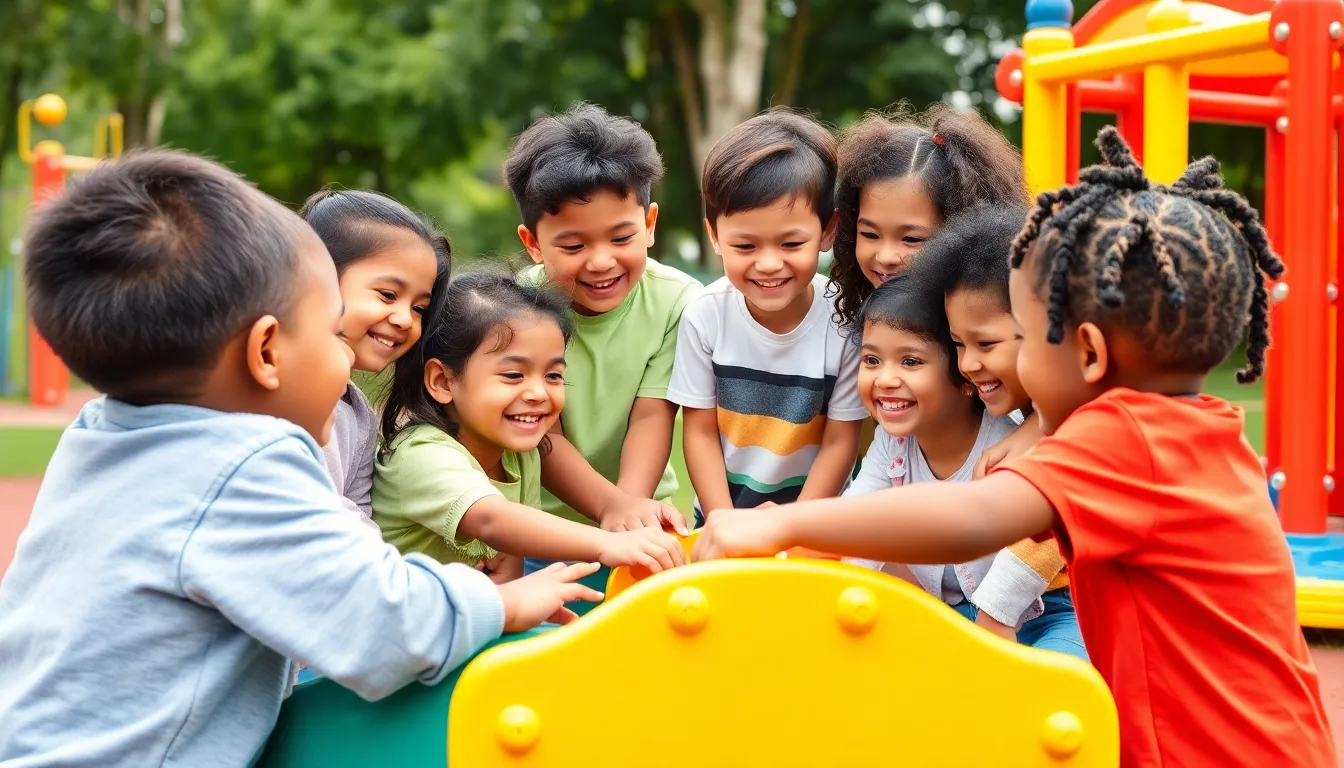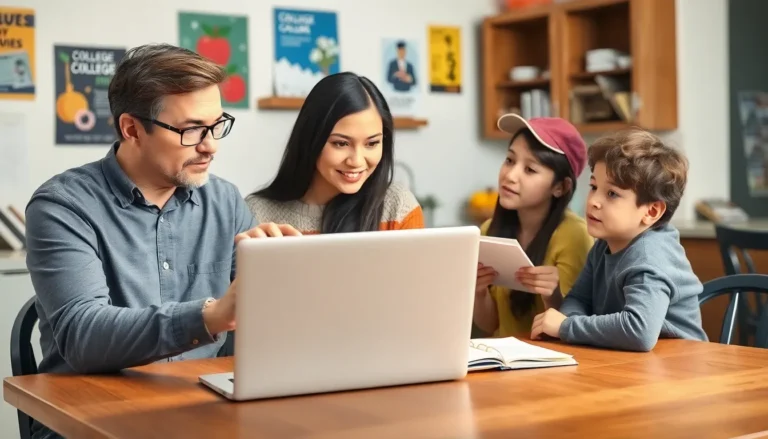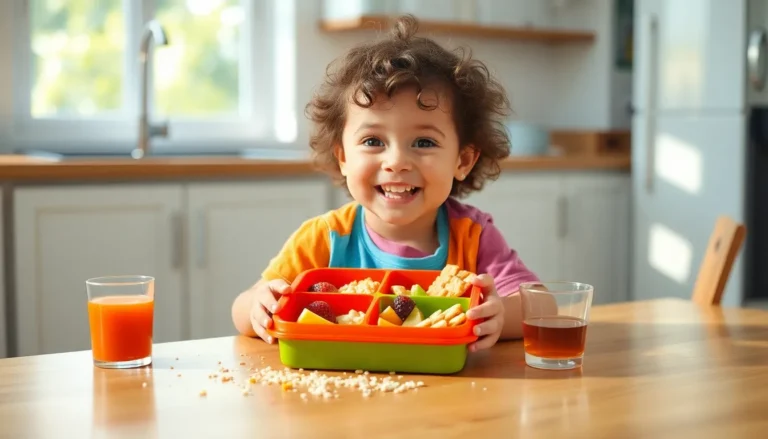Table of Contents
ToggleImagine a world where learning feels like a game and education is as fun as a day at the amusement park. That’s the magic of learning through play! It’s not just for kids; it’s a powerful approach that sparks creativity and fosters critical thinking. When children engage in playful activities, they absorb knowledge without even realizing it.
In a time when traditional learning can feel as exciting as watching paint dry, play offers a refreshing alternative. It’s the secret ingredient that turns mundane lessons into thrilling adventures. So why not trade in the textbooks for some building blocks and let the fun begin? Dive into the world of learning through play and discover how it can transform education into an exhilarating journey for every child.
Understanding Learning Through Play
Learning through play involves engaging children in activities that blend enjoyment with educational objectives. This method enhances creativity and critical thinking while making the acquisition of knowledge feel natural.
Definition and Importance
Learning through play is an approach where children gain knowledge and skills via playful activities. This approach plays a significant role in cognitive development, as it creates an inviting space for exploration. This method fosters social skills, emotional growth, and collaboration. Engaging in play helps children retain information better, making education an exciting adventure instead of a chore. Traditional learning methods often neglect these benefits, highlighting the importance of integrating play into education settings.
Theories Behind Learning Through Play
Several theories support the effectiveness of learning through play. Piaget’s theory emphasizes that children learn by interacting with their environment, making play essential for development. Vygotsky highlights the social aspect, illustrating that children learn more effectively alongside peers during play. The constructivist theory asserts that knowledge is built through experiences, affirming that play facilitates deeper learning. Together, these theories demonstrate that play is not merely fun; it is a critical component of a comprehensive educational framework.
Benefits of Learning Through Play

Learning through play offers numerous advantages for children’s development. This approach engages children in a manner that promotes various skills essential for their growth.
Cognitive Development
Cognitive development flourishes through play-based activities. Children enhance problem-solving abilities while navigating challenges during games. Engaging with puzzles fosters critical thinking and spatial awareness. Participating in group play encourages shared decision-making and boosts reasoning skills. When children interact with their environment, they make connections that facilitate knowledge retention. Research shows play-based learning improves memory and information assimilation, leading to deeper understanding.
Social Skills Enhancement
Social skills development occurs naturally in play scenarios. Through cooperative games, children learn to share, negotiate, and collaborate. They practice effective communication by expressing ideas and emotions during group activities. Positive peer interactions build empathy and emotional intelligence. Additionally, engaging with diverse playmates introduces children to various perspectives, enhancing their adaptability in social situations. Observations reveal that children who learn through play often exhibit stronger friendship-building skills and demonstrate greater conflict resolution abilities.
Emotional Growth
Emotional growth significantly benefits from play experiences. Children explore their feelings in a safe environment when engaging in imaginative play. Role-playing scenarios help them understand different emotions and respond appropriately. This method encourages resilience as children face winning and losing in games. Learning to manage feelings like frustration during play fosters emotional regulation. Experts note that playful interactions promote a sense of belonging and improve self-esteem, essential aspects of a child’s emotional development.
Effective Strategies for Implementing Learning Through Play
Integrating effective strategies can enhance the learning-through-play approach. Focus on creating an environment that encourages both fun and education.
Play-Based Learning Activities
Engaging activities play a vital role in effective learning through play. Focus on hands-on experiences like building blocks to encourage creativity. Incorporating games that foster problem-solving skills can boost cognitive development. Role-playing scenarios provide children with opportunities to practice social skills in real-world contexts. Utilizing arts and crafts encourages self-expression while aligning with educational goals. Such diverse activities ensure that learning remains dynamic and enjoyable for children.
Creating a Play-Friendly Environment
Designing a play-friendly environment is essential for promoting learning through play. Prioritize safety to ensure children feel secure while exploring. Incorporate flexible spaces that encourage movement and interaction. Include a variety of materials for creative expression, such as art supplies, books, and manipulatives. Ensure accessibility to allow all children to participate freely. By fostering an inviting atmosphere, educators can stimulate curiosity and encourage collaborative play experiences, supporting holistic development.
Challenges in Learning Through Play
Challenges exist when integrating play into learning environments. Misunderstandings about the educational value of play can hinder its implementation.
Misconceptions About Play
Many believe play is solely a break from serious learning. This notion underestimates the cognitive benefits play provides. Play serves as an essential medium for children to develop critical thinking and problem-solving skills. Some perceive that structured forms of learning are superior, arguing that only direct instruction leads to knowledge acquisition. Contrary to this belief, researchers emphasize that play-based learning significantly enhances retention and understanding. The lack of awareness about the various ways play fosters learning can create barriers for educators hesitant to embrace this approach.
Balancing Free Play and Structured Learning
Finding the right balance between free play and structured learning poses a challenge. Free play allows children to explore and navigate social interactions at their own pace. On the other hand, structured learning provides direction and ensures educational objectives are met. Educators must identify ways to create a harmonious blend of both. Integrating short periods of structured activities within free play sessions can ensure that important concepts are taught without stifling creativity. Striking this equilibrium fosters an environment where children thrive academically while also developing socially and emotionally.
Embracing learning through play transforms the educational landscape for children. By integrating play into learning environments, educators unlock a treasure trove of benefits that extend beyond academics. This approach nurtures creativity, critical thinking, and emotional intelligence, allowing children to thrive in a holistic manner.
As educational practices evolve, recognizing the value of play becomes essential. It’s not just a break from learning; it’s a powerful tool that enhances retention and understanding. By fostering a play-friendly atmosphere, educators can create engaging experiences that support every child’s development. The journey of learning through play promises to make education not only effective but also enjoyable for generations to come.




